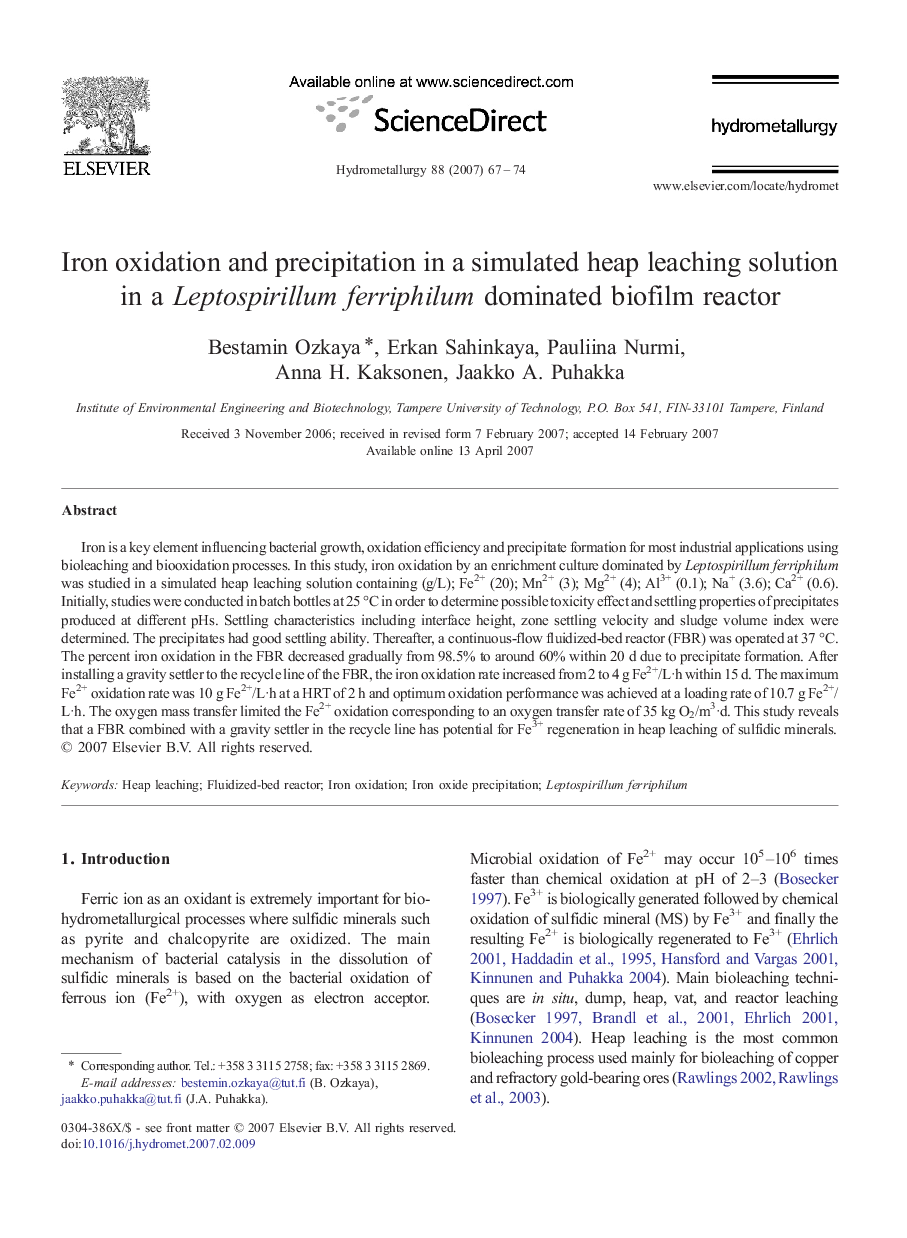| Article ID | Journal | Published Year | Pages | File Type |
|---|---|---|---|---|
| 213507 | Hydrometallurgy | 2007 | 8 Pages |
Iron is a key element influencing bacterial growth, oxidation efficiency and precipitate formation for most industrial applications using bioleaching and biooxidation processes. In this study, iron oxidation by an enrichment culture dominated by Leptospirillum ferriphilum was studied in a simulated heap leaching solution containing (g/L); Fe2+ (20); Mn2+ (3); Mg2+ (4); Al3+ (0.1); Na+ (3.6); Ca2+ (0.6). Initially, studies were conducted in batch bottles at 25 °C in order to determine possible toxicity effect and settling properties of precipitates produced at different pHs. Settling characteristics including interface height, zone settling velocity and sludge volume index were determined. The precipitates had good settling ability. Thereafter, a continuous-flow fluidized-bed reactor (FBR) was operated at 37 °C. The percent iron oxidation in the FBR decreased gradually from 98.5% to around 60% within 20 d due to precipitate formation. After installing a gravity settler to the recycle line of the FBR, the iron oxidation rate increased from 2 to 4 g Fe2+/L·h within 15 d. The maximum Fe2+ oxidation rate was 10 g Fe2+/L·h at a HRT of 2 h and optimum oxidation performance was achieved at a loading rate of 10.7 g Fe2+/L·h. The oxygen mass transfer limited the Fe2+ oxidation corresponding to an oxygen transfer rate of 35 kg O2/m3·d. This study reveals that a FBR combined with a gravity settler in the recycle line has potential for Fe3+ regeneration in heap leaching of sulfidic minerals.
